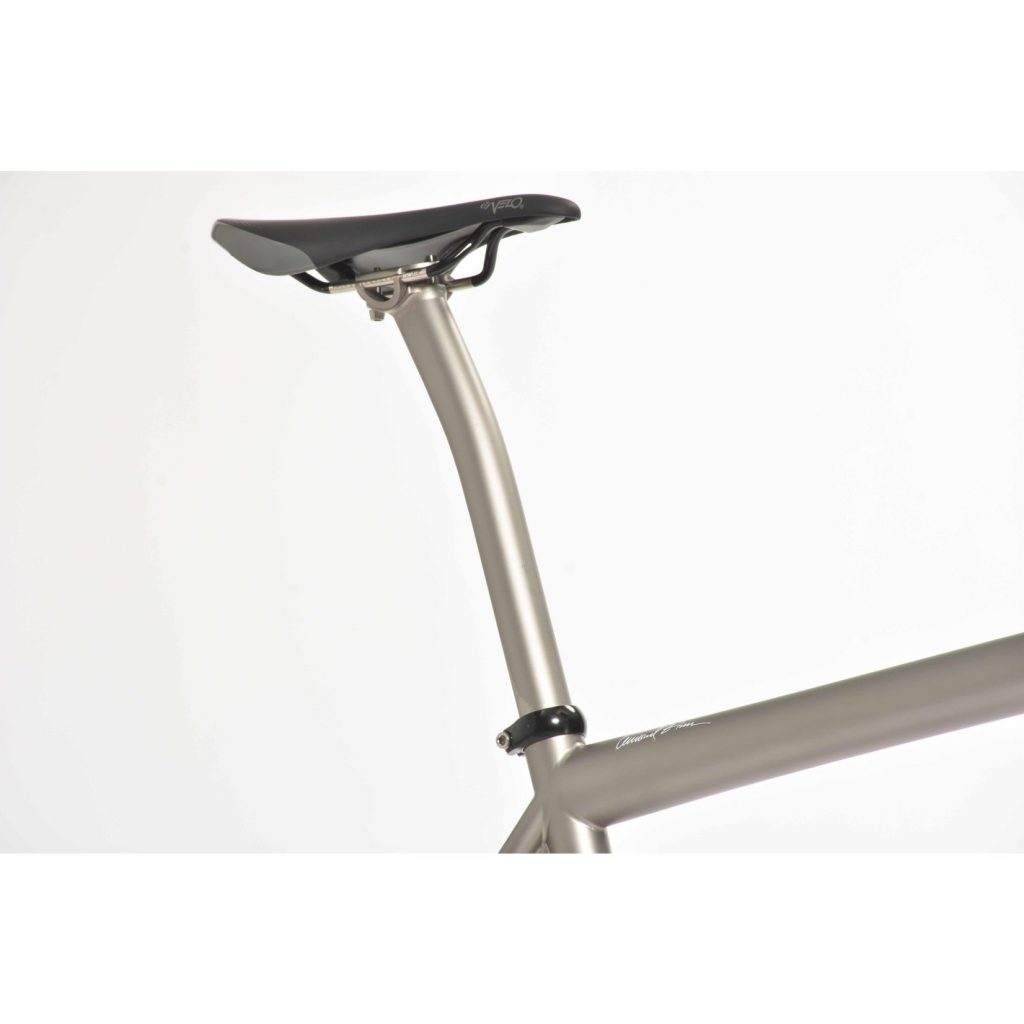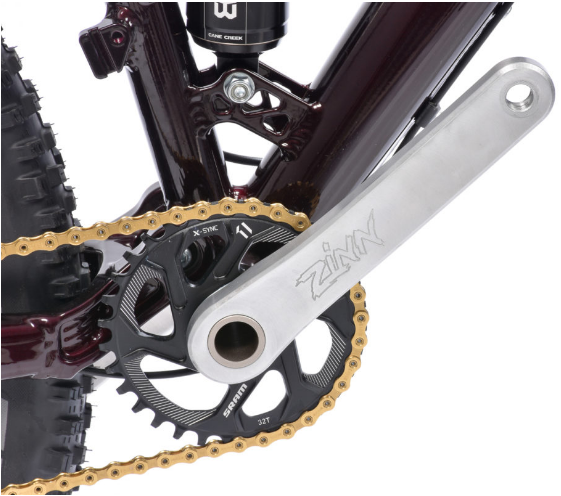Fatigue failure is failure that occurs after repeated cycles of stress, but at a stress that is less than that which would be required for the failure to occur with a single application. Cyclic loading is the key idea here, and we get plenty of that as we ride. The number of cycles to failure by fatigue decreases as the load is increased. This is where the big rider comes in – the rider we at Zinn Cycles specialize in building bicycles for. However, metals can also fail at rather low stresses given many repeated cycles of stress. All metals, other than aluminum, have what is known as a “fatigue limit,” which is the stress below which failure will never occur. With aluminum, failure can occur even at very low stresses, given enough stress applications.
Big riders are often very familiar with wearing out and breaking bike equipment. You go through tires much faster than lighter riders, your rear rim develops cracks at the spoke holes, and maybe you’ve broken spokes, chains, hub flanges, seatposts, saddle rails, saddle shells, crank arms, and even frames. To avoid breakage in use, big riders need to understand what the impact of metal fatigue is and replace their weight-bearing bicycle parts more frequently than a smaller rider would.
Many big riders who go to bike fitters come away set up with longer pedal spindles to properly align the knees over the feet to account for wider pelvic structure, and the recommended saddle will often be wide as well. The stem will tend to be long and the handlebars wide, too. These adaptations “to make the bike look like the rider,” as fit guru Andy Pruitt, director of the Boulder Center for Sports Medicine, often says, can significantly improve the rider’s comfort and efficiency. However, there is a fatigue cost.
The use of longer and wider parts results in higher loads for a bigger rider because they are cantilevered out further from their mounting points; this causes a higher rate of fatigue failure on those parts. A metal seatpost for a big and tall rider may be extended twice as far out of the frame and get twice as much weight put on it as a small rider’s seatpost, and it will consequently be subject to a higher rate of fatigue failure. One rarely hears of a small rider breaking a seatpost, but many big riders have had it happen to them. The breakage may be attributed to hitting a bump, but that may simply be the straw that broke the camel’s back; the cumulative stresses on the seatpost made it vulnerable so that the single, sharp impact snapped it off. Perhaps the seatpost would have passed a standardized lab fatigue test, but the loads applied and the amount of seatpost extension used in the lab test may be far less than the big rider might apply in use.

Similarly, a big, strong rider pushing on pedals with extra-long spindles screwed into long crankarms will be subjecting those metal cranks, as well as the spindles, to an extra high rate of fatigue failure. Consequently, this is what makes big riders replace their cranks (and spindles) more frequently than small riders.
Bike riding is too much fun to have your ride ruined by suddenly breaking a part that has your full weight on it. Big riders particularly would do well to recognize that metal bike parts do not last forever. They have a lifespan, and there is wisdom in replacing them before they break. I have seen a number of owner’s manuals for aluminum stems and handlebars that recommend replacement after three years of use. I think that’s a good guideline for aluminum weight-bearing parts under big riders. For instance, I personally replace my aluminum handlebars after two years of use. Even with ideal maintenance, all components will eventually reach the end of their serviceable life, the length of which depends on conditions and intensity of use.


